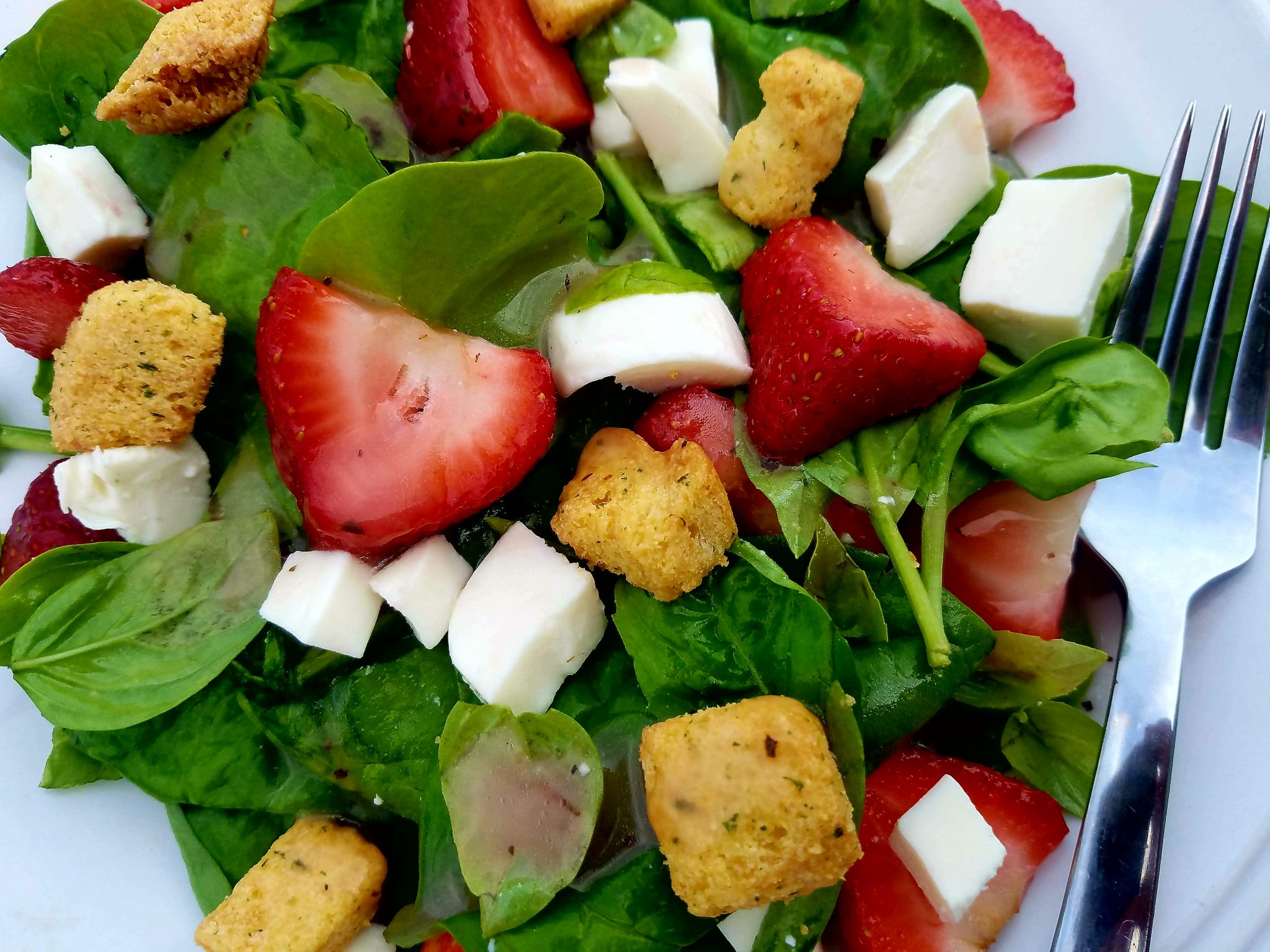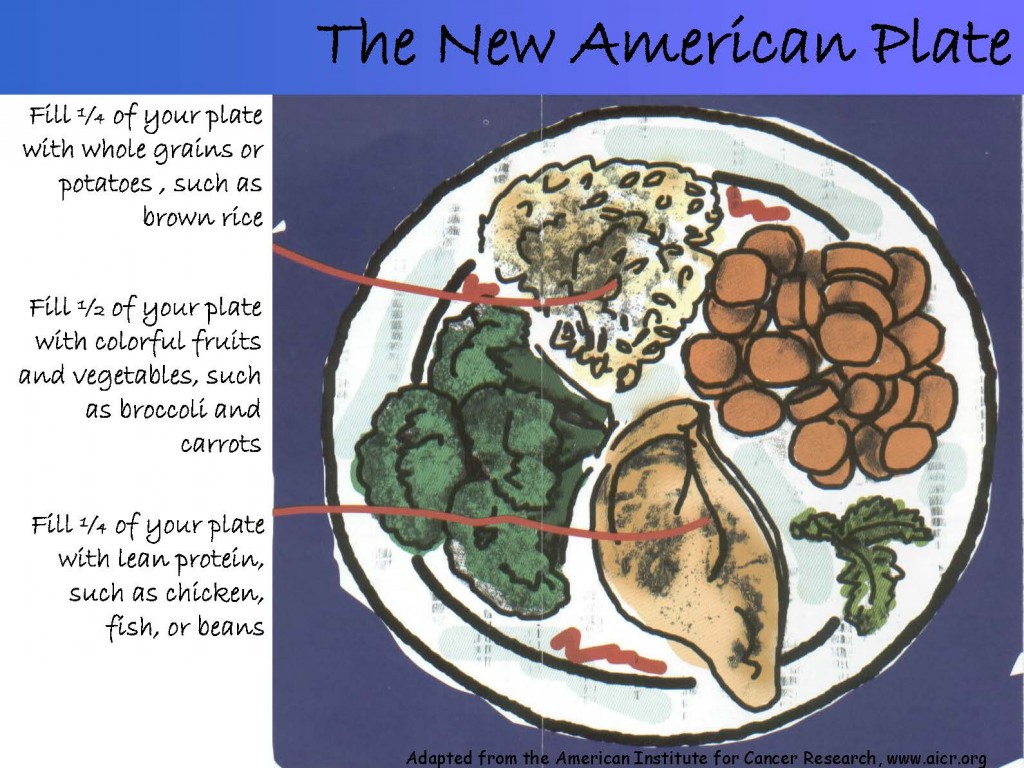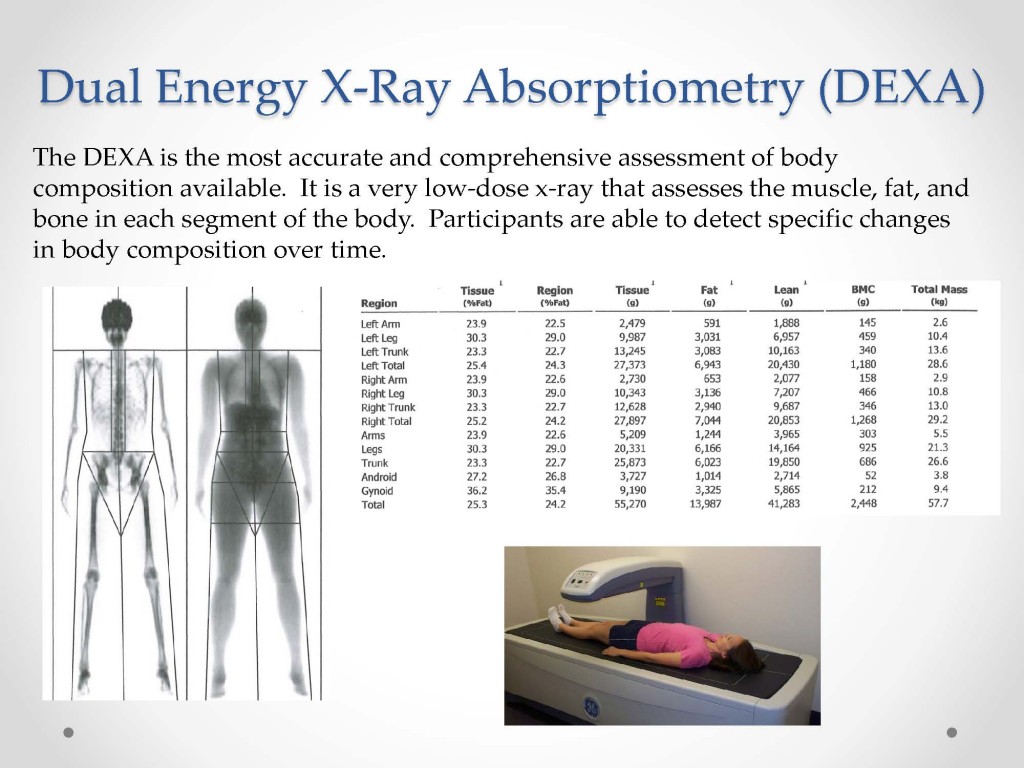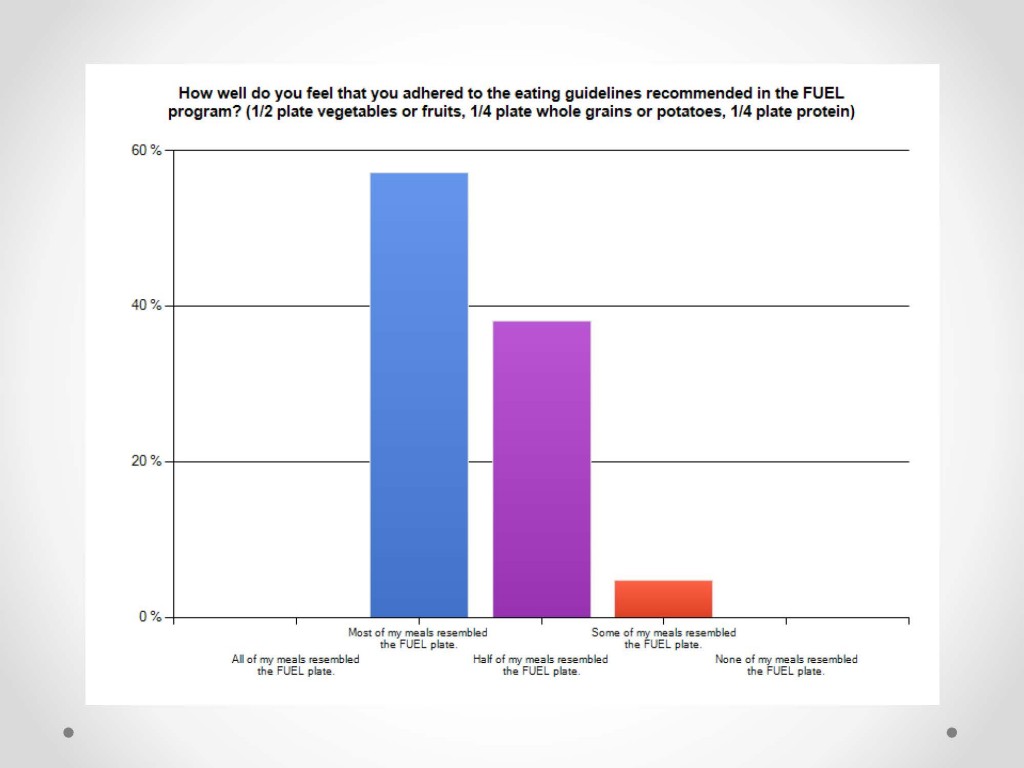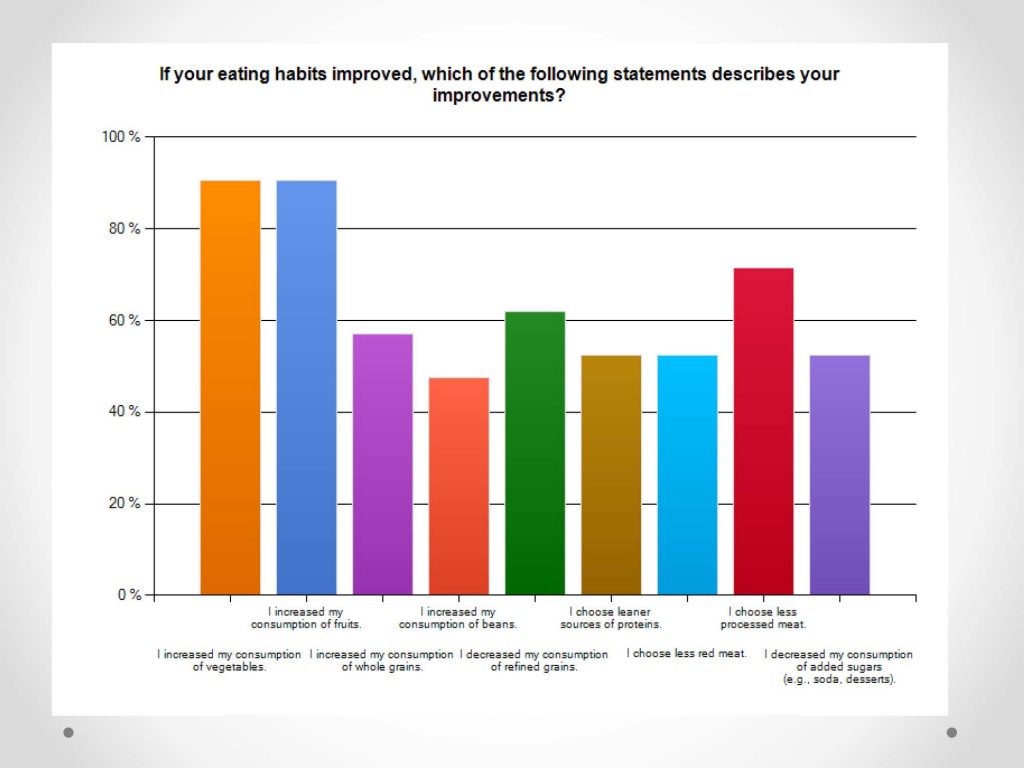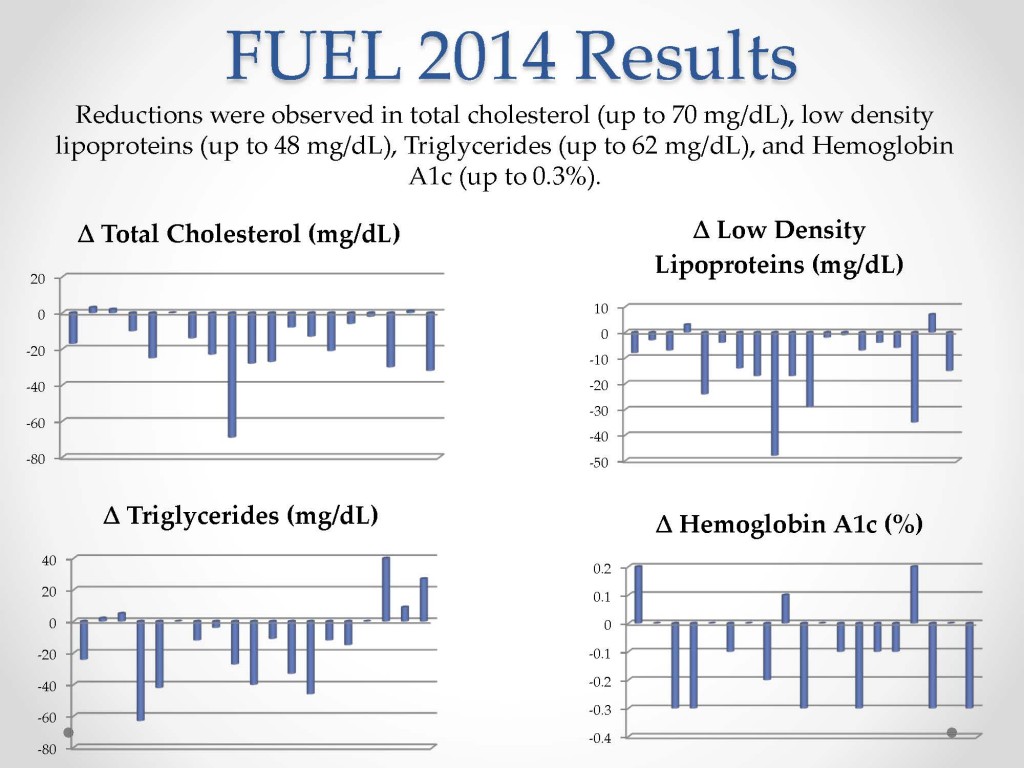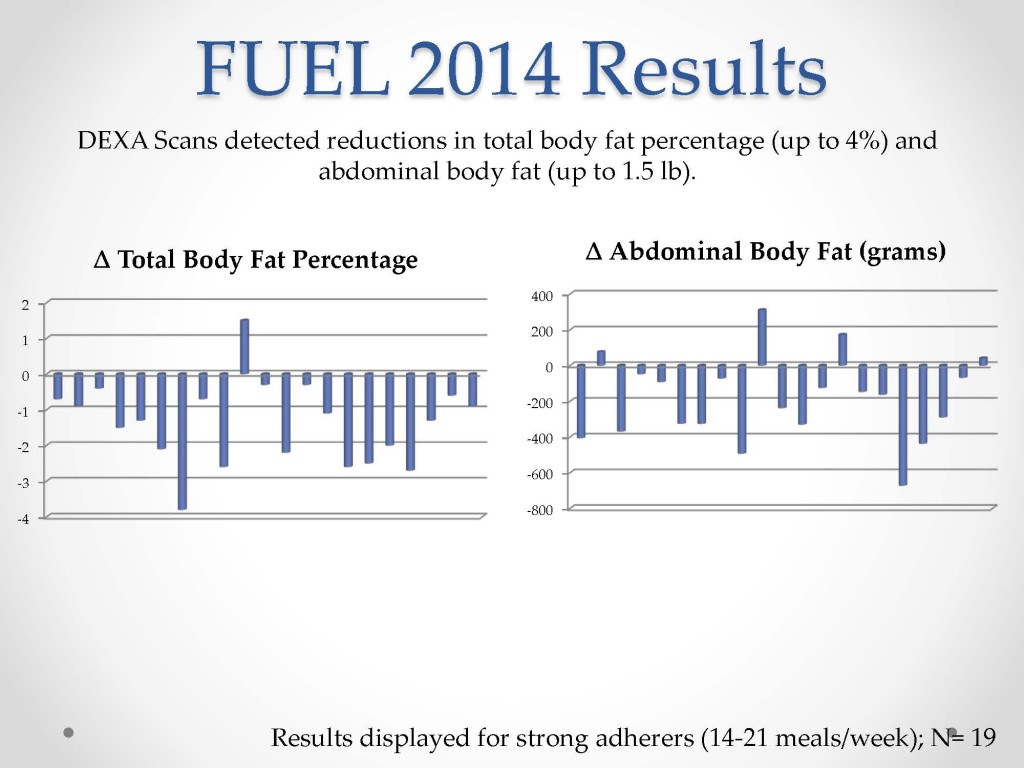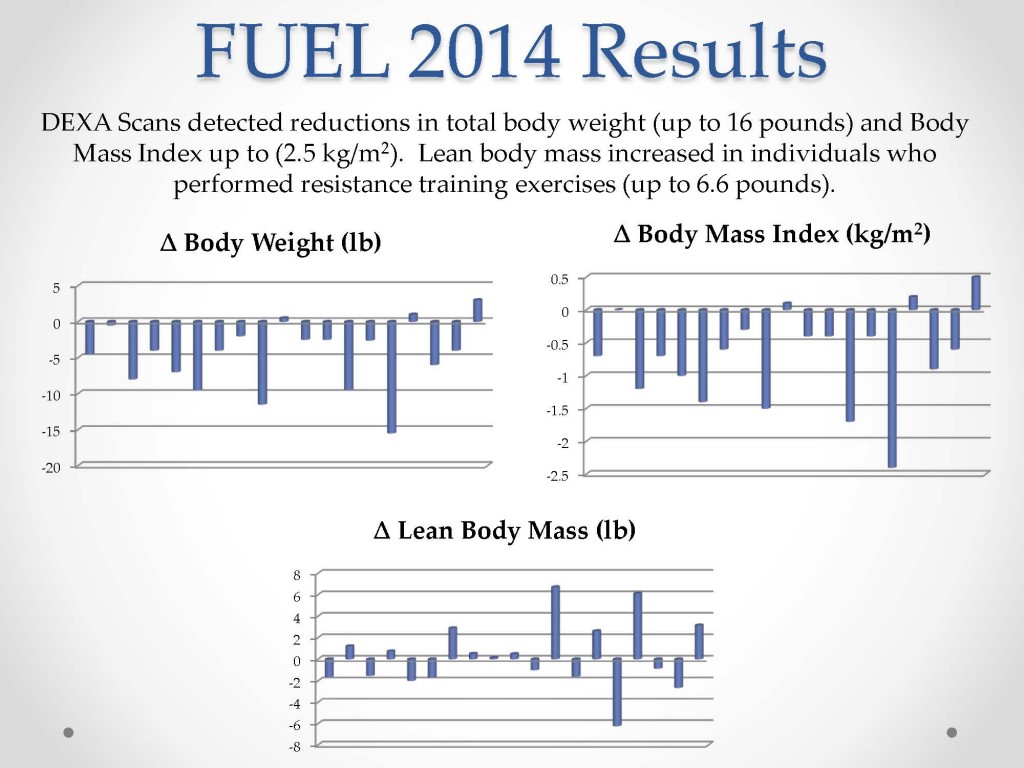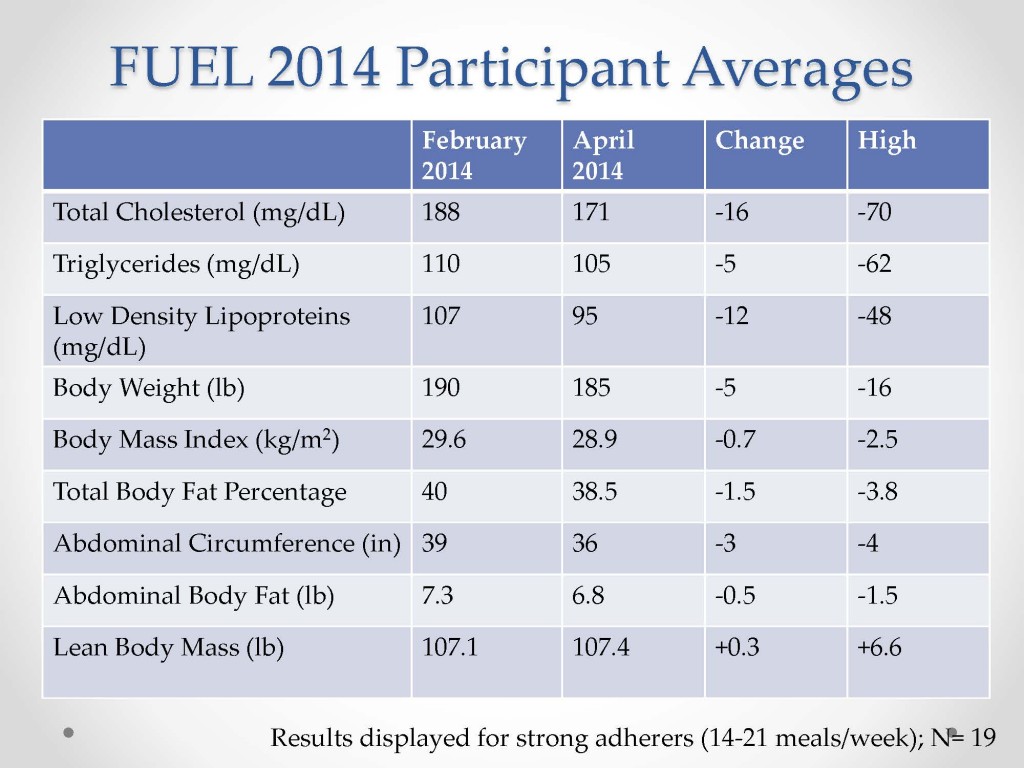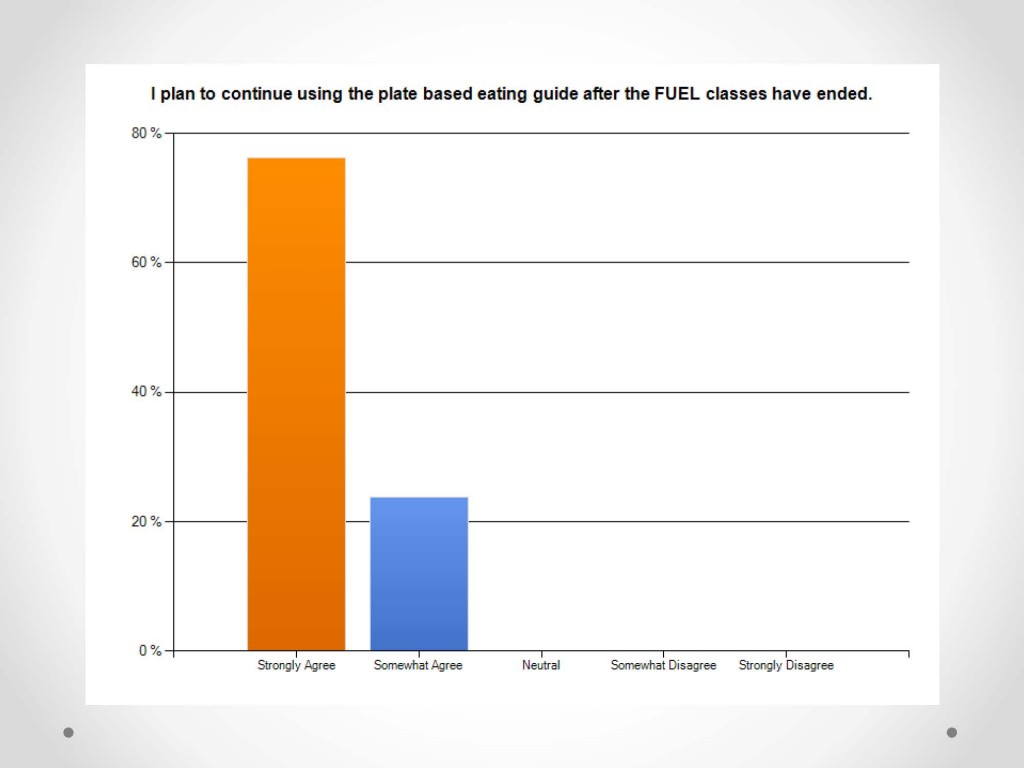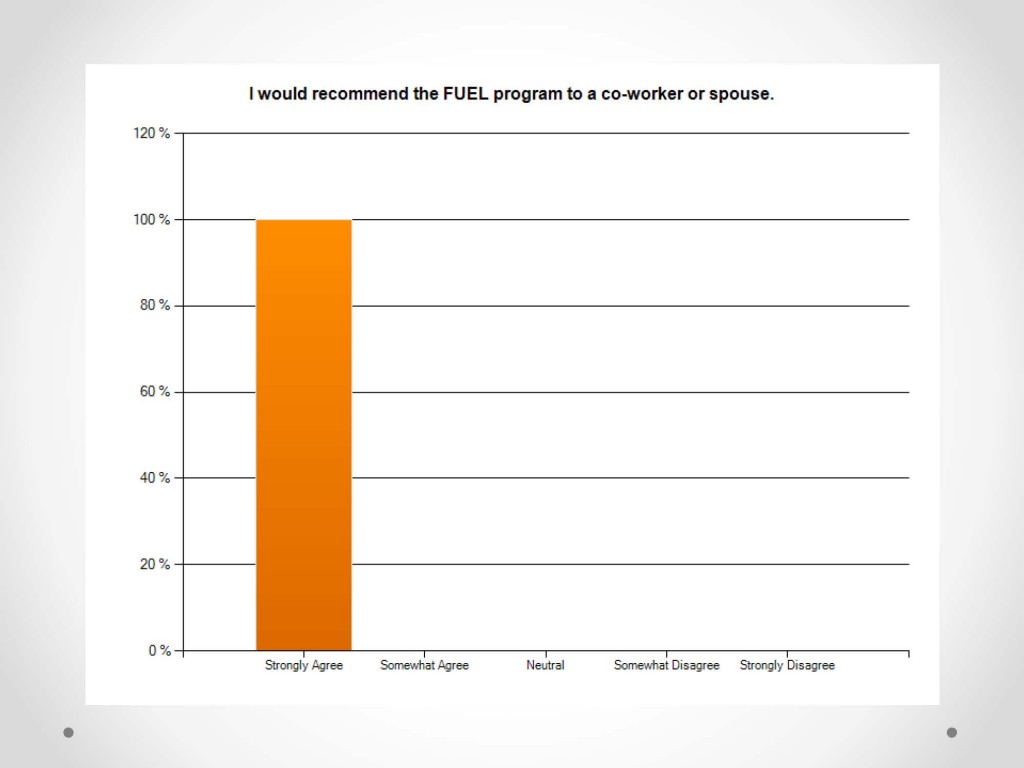The results of FUEL 2014 are in! Our participants experienced many exciting improvements in health outcomes as you will see below.
If you are new to this blog, FUEL is a plate-based dietary intervention that encourages participants to conform most meals to the FUEL plate which consists of:
1/2 vegetables and/or fruits
1/4 whole grains or potatoes
1/4 lean protein such as beans, chicken, turkey, fish, or low-fat dairy
These eating principles are also endorsed by the American Institute for Cancer Research, Harvard School of Public Health, American Diabetes Association, and United States Department of Agriculture.
Over the ten week FUEL session, participants attend one 45 minute health education class per week to explore how food choices affect health and learn practical ways to incorporate healthier foods. Assessments are provided to track progress. Participants receive comprehensive blood work analysis of health outcomes associated with chronic disease (cholesterol, triglycerides, blood pressure, C-reactive protein inflammatory marker, glucose, and hemoglobin A1c diabetes marker).
They also receive a state-of-the-art assessment of body composition with Dual Energy X-Ray Absorptiometry. This is our DEXA below. Participants lie on the machine for about ten minutes (or take a nap) while the machine arms scans over them. Notice that the muscle, fat, and bone of each area of the body are analyzed. This is much more accurate than using a scale to assess body composition. Over the years, we have observed participants improve their body composition (ratio of muscle to fat) even though the scale did not change. We have also observed participants lose weight quickly by dieting only to show them that it was loss of muscle mass.
(click images to enlarge)
FUEL is offered for Furman University faculty, staff, and spouses. Is it important to remember that our participants have a wide range of health histories. Some are in excellent health when they begin the class while others are not. Some have been using medications to control conditions like cholesterol and diabetes, others have not. Some are ready to make changes in their lifestyles; others participate so they can learn more and contemplate whether or not they are ready to change. We track their adherence to the FUEL plate, exercise records, and medication usage so it can be compared it to their changes in blood work and body composition. Participants are encouraged to go at their own pace and incorporate changes when they are ready. Behavior change must come from within.
So with all of that said, drumroll please…….
…here are some of the results of our fourth year of the healthy lifestyle intervention– FUEL 2014:
We had 38 participants this past semester. “Strong adherers” conformed most of their meals to the FUEL plate (14-21 per week). “Moderate adherers” conformed some of their meals to the plate (7-14 meals per week). Adherence typically looks something like this:
Notice that no one (not even me) makes every meal a perfect FUEL plate. The idea is to try to eat well most of the time.
For those who made improvements in their eating habits, they reported the following strategies below. By conforming their meals to the FUEL plate, most increased their consumption of vegetables and fruits. Others reported eating less processed meat, red meat, refined grains and sugars and choosing more whole grains, beans, and lean protein sources.
After the ten week healthy eating class, here are the results of their blood work. The graphs below depict the change in total cholesterol, low-density lipoproteins (“bad cholesterol”), triglycerides, and hemoglobin A1c. Notice that most participants experienced improvements– some were quite impressive!
The DEXA scans also detected quite a bit of progress. The graphs below depict the change in total body fat percentage and abdominal body fat. As you can see, the overwhelming majority of participants improved their body composition:
Body weight and Body Mass Index improved in most participants. Lean mass improved for most of those who were performing resistance training exercises:
And the aggregate numbers are displayed below:
So where do we go from here? FUEL participants plan to use the healthy eating principles discussed in class. Most really enjoyed the plate-based eating guide and plan to continue using it:
Annual blood work and DEXA assessments will be provided for participants to continue to track progress over time. Participants frequently refer their co-workers and spouses:
A few testimonials:
“Saying you know that something is unhealthy and knowing how it is unhealthy are two totally different things!” stated FUEL participant Donna Greene (Psychology). “The FUEL class is so interesting and the time flies when we are in class. I can’t imagine anyone not trying to live a healthier lifestyle after being in that class!”
“FUEL provides great research-based information,” stated Beth Crews (Undergraduate Evening Studies). “It helps you to sort through the quackery and fads to understand what dietary advice is substantiated.”
Kate Stratton (ITS) added, “The DEXA scan and blood analysis that Furman provides are so helpful. It makes it personal and real. It allows you to evaluate your health status and gives you great insight before you get to a point of danger.”
Individuals with hectic schedules appreciate the practical suggestions that are offered in the class. Kyra Zollman (ITS) reported that she is now conforming a majority of her meals to the FUEL plate. “Before taking the class I thought I didn’t have the time to make meals like this with two young children. I was wrong. The classes are wonderful in showing how easy it is to eat healthier.”
Sarah Worth (Philosophy) agreed. “The easy part is so important! We implemented it with the family immediately and even the kids now ask how each section will be filled!”
“I think the single most valuable tool for me has been the plate concept,” stated Denise Huffman (spouse). I have tried many other eating plans that are often complicated and cumbersome. With the plate concept, I am constantly evaluating food portions and food groups. Having a visual is much easier than always having to measure everything.”
John Wheeler (Integrated Research) found that the FUEL program was extremely flexible and easy to follow in combination with other dietary restrictions. “Certain ‘convenience’ foods can even be included as long as they fit within the scope of the basic distribution. The 45 minute weekly meeting is highly educational and very helpful in providing suggestions.”
Participants have found that healthful foods can also be very delicious. Crews tried the Green Monster fruit smoothie with spinach for breakfast. “The very thought would have turned my stomach before, since I am kind of ‘greens-avoidant.’ But they’re really good!”
Six members of the ITS Department enrolled for FUEL and have also been enjoying lunch in the Dining Hall together once a week. “They have a great selection and make it possible to eat a FUEL diet,” stated Zollman. Stratton added, “It is great support and encouragement at work.”
Stratton stated, “I really appreciate Furman providing this benefit.” Huffman agreed, “I am so glad that I signed up for FUEL! It only takes one hour a week, but the information we have received is priceless!”
Would you like to learn more about using a plate-based eating guide? Check out some of our resources below:
The Foundations of FUEL: Building a Healthy Plate
The Best of FUEL: Complete 30 minute meals
Meals in Minutes: Perfect when you are short on time or energy.
Example FUEL Plates: See what some of our participants were actually eating.
Easy Vegetable Sides: You don’t have to spend hours in the kitchen. Check out these easy vegetable sides with little to no chopping required.
Finding Whole Grains: Learn about the benefits of whole grains and easy ideas to incorporate them in intact form.
FUEL Meal Ideas When Eating Out
FUEL Meal Ideas in the Furman University Charles E. Daniel Dining Hall
Stocking a Healthy Pantry: This easy strategy will make meal time a breeze.
Recipe Corner: Over 50 printable meal ideas that fit the FUEL plate. Each has a nutrition analysis, shopping list, and tips.
